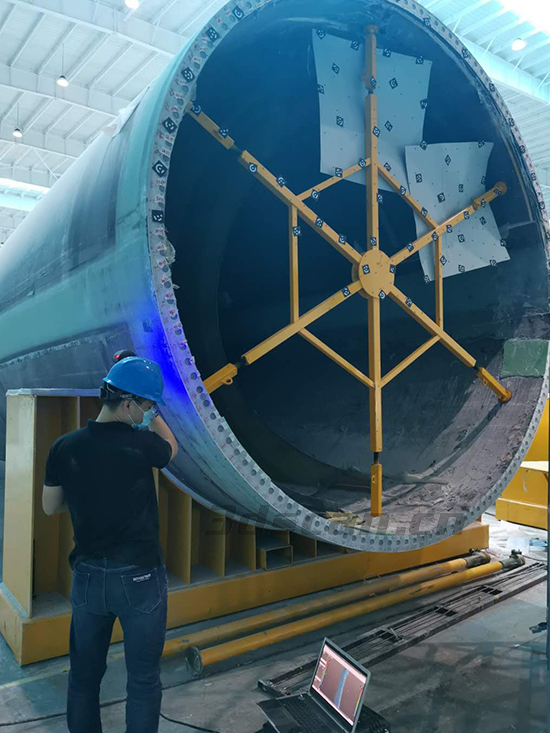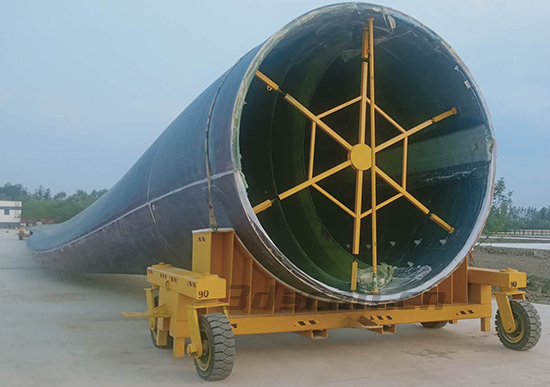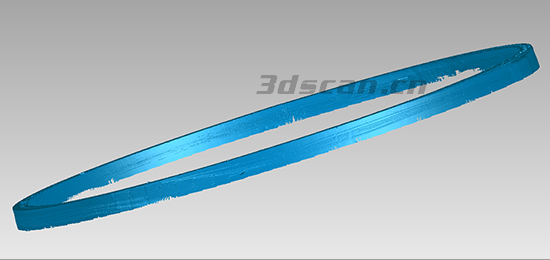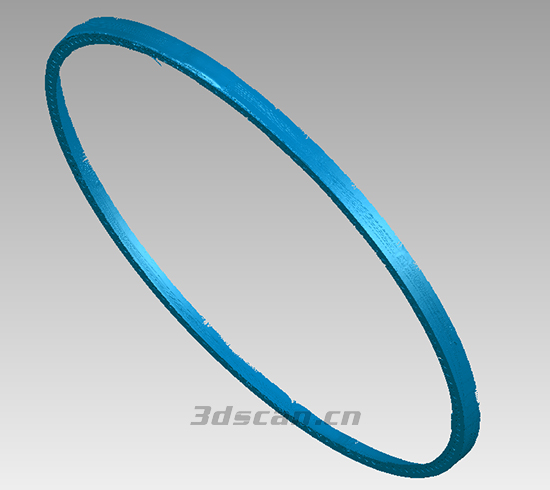The design of the blades in a wind turbine can directly affect the efficiency of wind energy conversion. Good design, reliable quality and superior performance are the decisive factors to ensure the normal and stable operation of the unit. It directly affects its annual power generation and is an important part of wind energy utilization. Use 3D scanning technology to quickly obtain 3D data of the inspection position of the blade. Through data analysis and comparison, we can understand the existence of the problem and make timely maintenance to ensure the operation of the work.
Practical problems
The customer needs to check the size of the outer ring of the blade root to check the amount of deformation. And it has high precision requirements, fast scanning speed, and can complete the work efficiently.

Site scan
Due to the large size of the blade (about 80 meters in length and more than 3 meters in diameter), it is inconvenient to move, relying on manual traditional measurement methods, the efficiency is low, the accuracy is not up to the requirements, and accurate detection can not be done. Therefore, three-dimensional scanning detection is adopted.

Site scan
Holon solutions
According to customer needs and workpiece conditions, Hualang 3D technical engineers use 3D photogrammetry HL-3DP with the handheld 3D scanner HOLON751 to scan to obtain data, which can reduce the cumulative error of 3D scanning data splicing.

Scan STL data graph
First, 3D photogrammetry 3DP is used to obtain the 3D coordinates of the detection part. Then use the handheld 3D scanner HOLON751 to scan to obtain high-precision data with fast scanning speed and efficient completion of the work. Import the data into the 3D inspection software for comparison and analysis with the original digital model, and export the data analysis report to know the amount of deformation.

Scan STL data graph